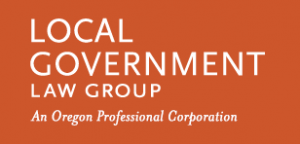Time to Dust Off Those Working Rules
Christy Monson
From our Spring 2021 e-newsletter
If your Board or Council hasn’t already done so, now is the time to find those Council or Board Rules (sometimes called Working Rules of Order), dust them off, and re-read them. Often edits are called for, both to clarify your governance processes and to customize them for your governing body.
Ideally, your rules should be no longer than six or so pages. They should clearly and simply describe how your governing body has decided to work together and the general process and protocol for your meetings. More importantly, a thoughtful discussion about your rules will set the tone for the rest of the year—and can also serve as a good faith promise among elected officials about how they will treat each other, staff, and the public.
The best process for reviewing your rules is to first have your Manager and/or your attorney review them and suggest edits. The rules should then be circulated to your elected officials, placed on an agenda for discussion, possible amendment and adoption. (If your staff and your Board President or Mayor have done the advance work, this agenda item should take approximately 30-60 minutes.)
A successful discussion would include the entire governing body agreeing not only to follow your newly-adopted rules, but to also hold each other accountable for acting in a collaborative, respectful manner—especially when times get tough. In this conversation, your most important goal should be to secure each member’s buy-in and public commitment about how you will treat each other, how you will treat your staff, and what your Board or Council meetings will ideally look and sound like.
Below I provide you with some key concepts to discuss and include in your Rules:
• Who has the authority to create your agenda? How would someone else get an item placed on an agenda? (Author’s note: no blindsiding. All items should be clearly listed on a future agenda so that the public has a general idea of the topic to be discussed and the vote, if any, to be taken.)
• Will your Board or Council use Work Sessions where no votes are taken? Why or why not?
• Will you allow your fellow Board members to abstain from votes where they don’t have a conflict of interest? What is the effect on other Board members if someone frequently abstains? What is the effect on your community? (Author’s opinion: abstentions—unless they are in response to a conflict of interest—are generally bad for your community and for your governing body as a whole.)
• How should conflicts of interest be handled? How will you apply Oregon ethics law when handling conflicts?
• How closely will you follow Roberts Rules of Order? Do you wish to follow a simplified version of Robert’s Rules? (Author’s hint: simple is better.)
• What are your options if an elected official repeatedly misbehaves at meetings or breaks your rules?
• Who has the authority to appoint people to committees and to vacant Board or Council positions? Does your Charter already provide some guidance on this matter?
• Who has the authority to discuss personnel issues at a public meeting? What happens if a member of the public discusses personnel issues at the meeting?
• How and when will you take public comment? When during the meeting will you take it? Will the public be limited to three minutes of non-repetitive comments? Why or why not? What happens if a member of the public makes comments that are inappropriate or outside of your governing body’s authority to address? (Author’s note: remember that public comment does not mean a Council discussion. If the comment is important or requires action, you can always ask staff to address the issue later or schedule the issue on a future agenda.)
• What are your options to increase elected official participation and to avoid one or two members from dominating the conversation?
• How much staff time is a single member allowed to use per month? Why or why not?
• Who has the authority to contact your legal counsel?
• Who has authority to speak to the press on behalf of the governing body? Do you want to voluntarily agree to not to speak to the press about governing body matters individually? Why or why not?
• Do you wish to designate a Board member to handle routine personnel matters involving your Manager or Administrator, such as vacation/sick leave requests and monitoring? What would happen if you don’t do this?
• What will you do if a public meeting turns disrespectful? Does your President or Mayor have additional authority in such cases? Anyone else?
Your legal counsel should be able to provide you with some sample rules and a process for evaluating and adopting them. Good luck and thank you for your service to your community. And remember: the time to decide on how you will handle difficulties is before the difficulties arise!

